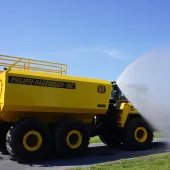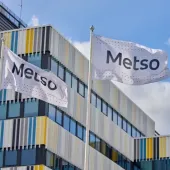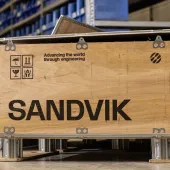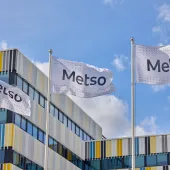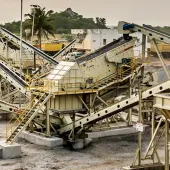Wear Protection and Material Selection

First published in the April 2016 issue of Quarry Management
Consideration of materials in the design and specification process for quarrying plant is key to ensuring the most efficient operation and lifetime of the equipment, as Ian Cornfoot, Hardox Wearparts’ Oceania wear service manager, explains
With the variety of abrasive environments that quarrying plant may be subjected to, it is important to consider the wear mechanisms that will occur when designing and specifying materials to be utilized. Correct decisions at this stage can result in much improved plant performance and wear life. Selecting materials that suffer from accelerated wear will result in more shutdowns and costly repair work.
Everyone is aware of the regulations, requirements and expertise in the field of structural engineering. To date, however, wear has never really been approached in the same manner as structures, with material selection and design often down to ‘guestimations’, generalizations or even just utilizing whatever materials are available at a low cost, regardless of their wear performance or appropriateness for the particular wear environment – something that would be unthinkable in the structural world.
As such, equipment manufacturers and quarry operators historically have even been known to utilize structural steels instead of specific wear-resistant steels or other wear-resistant materials in wear liners, chutes and hoppers. While these steels may offer performance advantages over mild steels, they do not offer the same combination of abrasive wear and impact resistance as a steel specifically formulated for wear resistance, and so are likely to result in more frequent maintenance events.
There is also an abundance of wear-resistant materials, and selecting the most appropriate type for a particular plant – both from a performance and an economical perspective – can be a challenge, particularly as different abrasive scenarios may require different solutions.
What is abrasive wear?
Abrasive wear can be defined as the removal and deformation of material through contact with another material (the abrasive). At a macro level it is possible to look at sliding, impact and squeezing wear, but at a micro level there are really just two types of interaction between the abrasive material and the part suffering wear: micro-ploughing (plastic deformation) and micro-cutting (permanent deformation and material removal). As to which of these interactions occurs is a factor of the relative hardness of the abrasive to the material subject to wear, the type of contact and, for impact wear, the shape, size and velocity of the particles.
Design against wear
In the vast majority of cases it is preferable to steer the wear processes into the micro-ploughing zone and away from micro-cutting that results in accelerated wear. To do this, it is necessary to design the plant to encourage interactions that are more likely to result in the less-aggressive micro-ploughing. The inclusion of design features such as rock rolling bars and dead-beds/rock boxes, and efficient use of liner plates can all assist in increasing plant life and maintenance intervals.
Promoting rolling rather than sliding of aggregates and rocks can reduce wear, as it provides less opportunity for abrasives to cut into the surface of the steel. Dead-beds or rock boxes promote abrasives wearing on themselves rather than on the plant. Efficient liner plate design, utilizing the most appropriate materials across the plant – in particular those comparatively harder than the particular abrasives – can also provide significant benefits.
A tool for material selection
Hardox offers the broadest range of wear plate in the world – thickest to thinnest and the widest range of grades – resulting in a wide variety of options in the design and production of wear parts. It also represents much more than a simple thickness and grade – it represents a philosophy around weldability, consistency, through hardness, formability and toughness that is not found in other materials. By utilizing the special combination of properties and consistency of Hardox, new concepts in plant design can be developed.
Hardox Wearparts Centres can work with customers to select the most appropriate grades for their plant through use of SSAB’s WearCalc software. Estimations of relative wear life may be made based on the abrasives and abrasive scenarios likely to be found in a specific application in a specific quarry. This can be utilized in the material selection process to ensure the most efficient materials are chosen, with cost of raw materials versus wear life/downtime assessments possible.
Hardox Wearparts is the leading global network of local wear parts manufacturing and maintenance businesses. Working closely with SSAB, the manufacturers of Hardox steels, Hardox Wearparts Centres have access to advanced materials and technology. The company works in partnership with end-users to select the most appropriate materials for the wear scenario and produce custom wear-protection solutions. As Hardox materials are readily available, Hardox Wearparts Centres can also manufacture replacement parts when needed, reducing the need to stock a wide range of cast or pre-manufactured plate components.
- This article first appeared in the August 2015 edition of Quarry magazine, the official journal of the Institute of Quarrying Australia, and is reproduced here by kind permission.


